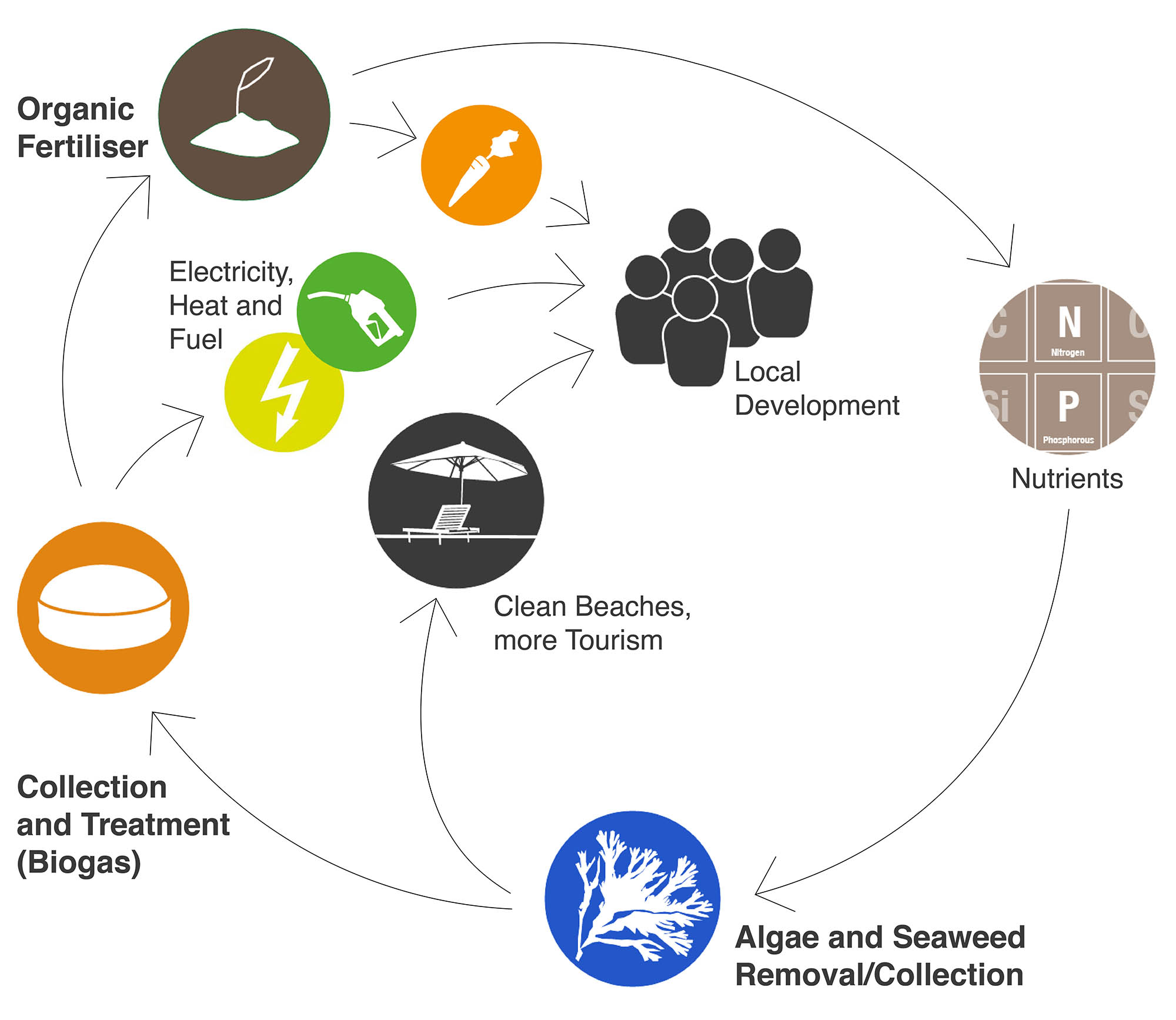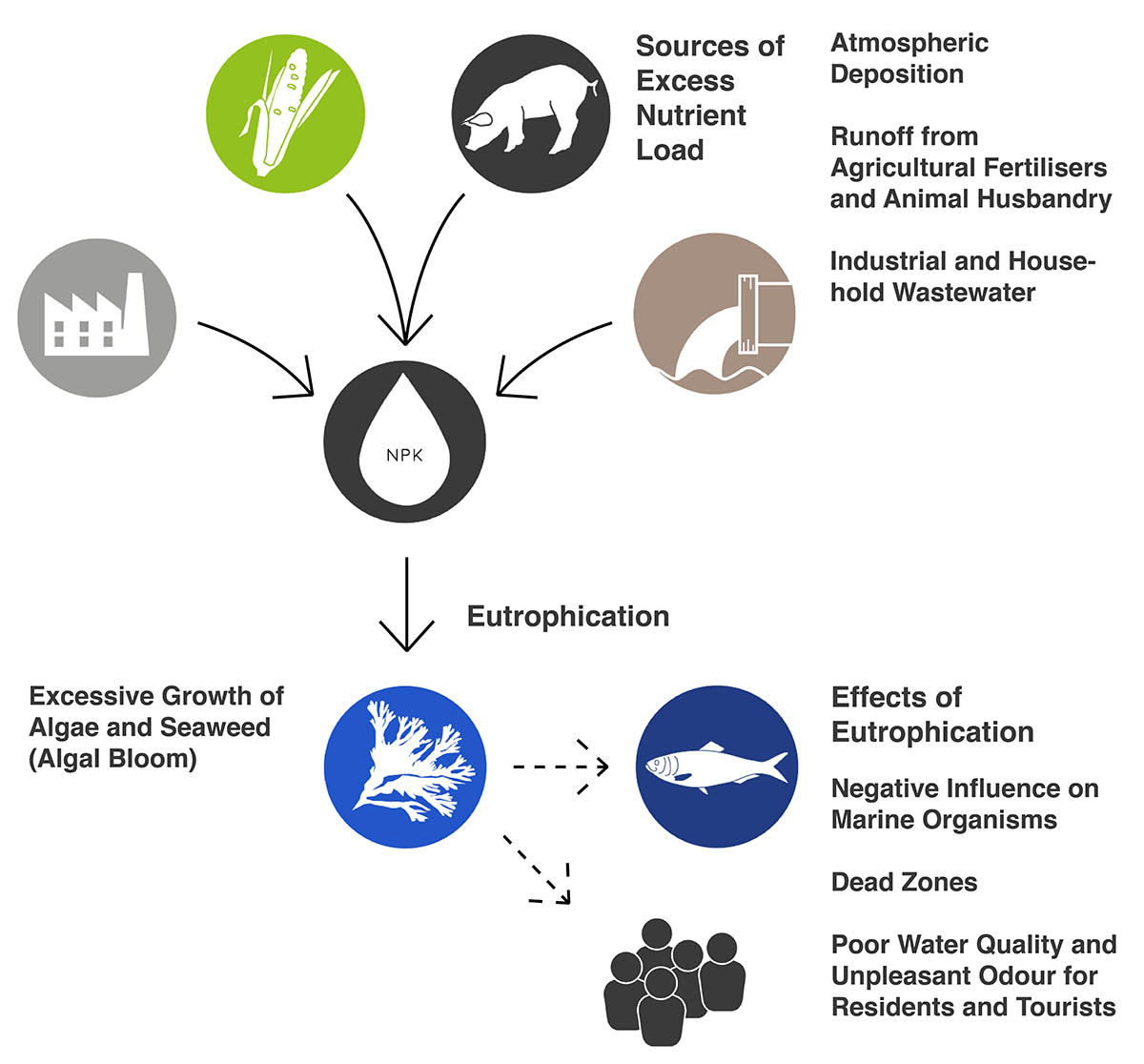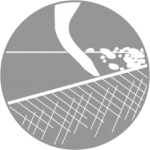What issues does COASTAL Biogas address?
COASTAL Biogas turns problems into potential for the Baltic Sea region and environment – reducing eutrophication, creating renewable energy and high-quality bio-fertilisers from unwanted waste, making it easier to keep beaches clean and inviting for the region’s vital tourism industry and at the same time contribute to the transition to a circular bio-economy.
Seaweed is part of the algae family and a multi-facetted organism that has properties, which can be useful in many areas – among others medicine, energy and even as a targeted nutrient collector. Along with other algae it is the main organic component of beach wrack. By removing the seaweed from the beach, the nutrients do not re-enter the Baltic Sea and can help prevent eutrophication. There are many different species of seaweed and they are adapted to different regions.
In COASTAL Biogas one of the aims is to find effective beach-cleaning techniques and pre-treatment possibilities for using cast seaweed in biogas plants for producing electricity, heat and fuel. The digestate from the biogas plants can then be used as organic fertiliser and substitute imported synthetic mineral fertiliser.
> Closing the cycle
Digestate from the biogas plant can be used to substitute mineral fertiliser - putting the valuable nutrients where they are needed.
> Treatment with benefits
Biogas plants can turn organic material into renewable energy. Biogas can be used for electricity, heating and even as vehicle fuel.

> The cycle
Nutrients find their way by water and air to the Baltic Sea - more nutrients than it can handle and excess algae results. The excess algae cause problems for the whole ecosystem.
> Nuisance to resource
The algae accumulates and cause unpleasant smells for residents and tourists. Collection and use keep the nutrients from returning to the water and allow them to be used for sustainable purposes.
Further information on the the following aspects can be found by clicking on the images:
Environmental
What impact does eutrophication have on the region and how much can algae management help?
General Feasibility
General considerations, checklists and examples of how algae management is financially and technically organised.
Eutrophication
The Baltic Sea is the biggest brackish water body worldwide – having a mixture of salt water and fresh water. Its unique biodiversity is, however, threatened by a phenomenon called eutrophication. Eutrophication is essentially due to an overabundance of the nutrients nitrogen and phosphorous in the water. The sources are manifold – they can come from the atmosphere, runoff waters from agricultural fields as well as wastewater, just to name a few. The Baltic Marine Environment Protection Commission – Helsinki Commission, known as HELCOM, has created a website that gives detailed information on the causes and effects of eutrophication. The HELCOM report “State of the Baltic Sea” (English) gives a good overview.
One of the effects of eutrophication is an excessive growth of plants, such as phytoplankton, which in turn causes other ecosystem changes. The accelerated growth of algae and other water plants yields problematic ecological consequences. When the algae decompose they consume corresponding amounts of oxygen, which creates dead zones at the bottom of the Baltic Sea.
An increase of dead zones at the sea bottom makes animal life there impossible. Thus, biodiversity decreases and the situation worsens. Furthermore, foam formation occurs and the degradation of washed up algae on the beaches causes unpleasant odours. This creates problems for the environment and communities along the coast – including the livelihoods associated with tourism.




